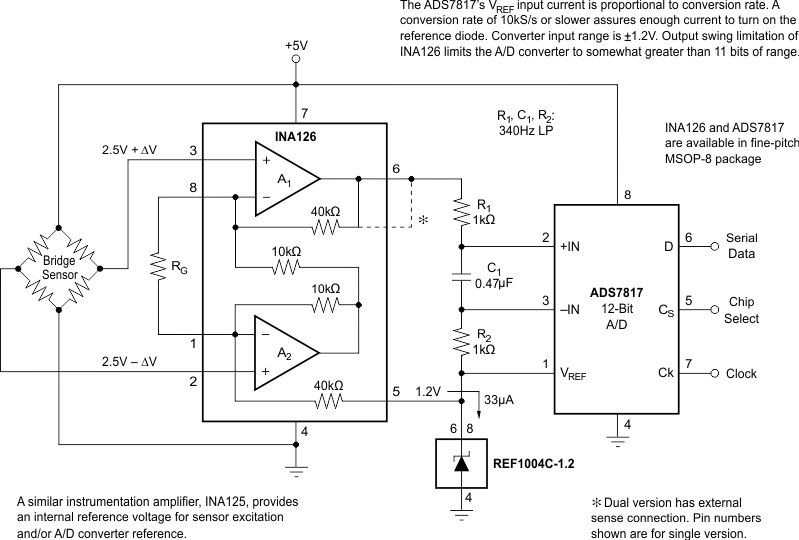SBOS062C September 2000 – January 2022 INA126 , INA2126
PRODUCTION DATA
- 1 Features
- 2 Applications
- 3 Description
- 4 Revision History
- 5 Pin Configuration and Functions
- 6 Specifications
- 7 Detailed Description
- 8 Application and Implementation
- 9 Power Supply Recommendations
- 10Layout
- 11Device and Documentation Support
- 12Mechanical, Packaging, and Orderable Information
Package Options
Mechanical Data (Package|Pins)
Thermal pad, mechanical data (Package|Pins)
- D|8
Orderable Information
9.1 Low-Voltage Operation
The INAx126 can be operated on power supplies as low as ±1.35 V. Performance remains excellent with power supplies ranging from ±1.35 V to ±18 V. Most parameters vary only slightly throughout this supply voltage range (see Section 6.7). Operation at low supply voltage requires careful attention to make sure that the common-mode voltage remains within the linear range (see Figure 6-5 and Figure 6-6).
The INAx126 operates from a single power supply with careful attention to input common-mode range, output voltage swing of both op amps, and the voltage applied to the Ref pin. Figure 9-1 shows a bridge amplifier circuit operated from a single 5-V power supply. The bridge provides an input common-mode voltage near 2.5 V, with a relatively small differential voltage.
 Figure 9-1 Bridge Signal Acquisition, Single 5-V Supply
Figure 9-1 Bridge Signal Acquisition, Single 5-V Supply